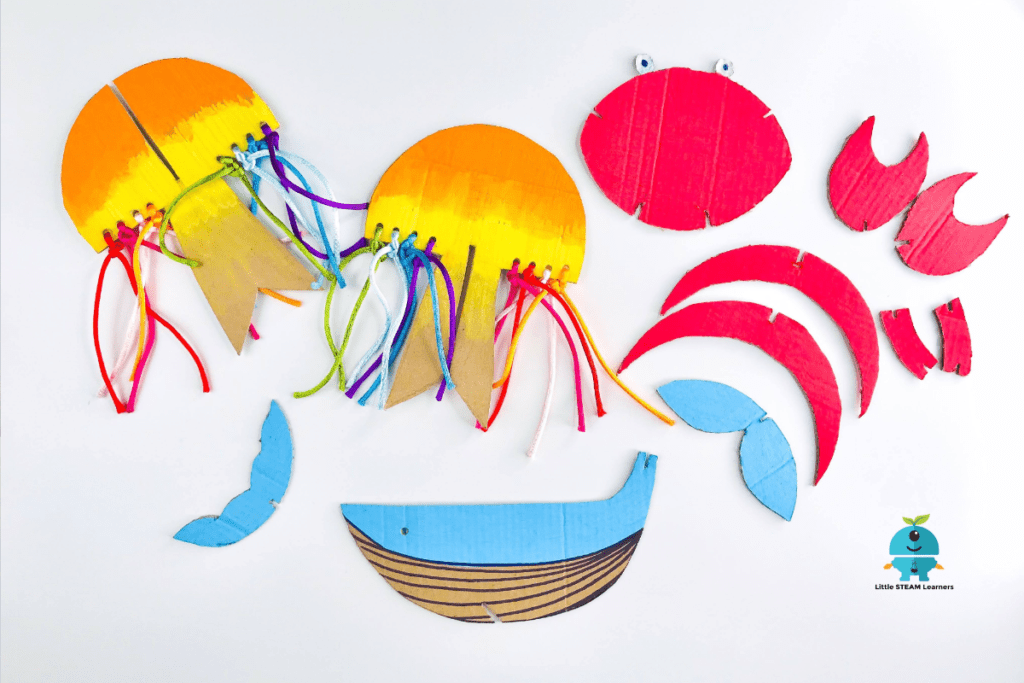Ever wondered how to teach your little learners the conversion from 2D to 3D objects? This activity is a great way to explore exactly that. Make these fun 3D sea creatures puzzles from cardboard and help your little learners develop their spatial awareness skills.
Young learners often confuse between 2-dimensional and 3-dimensional objects, even some adults have a difficult time with spatial awareness. The best way to reduce this confusion is to have repeated hands-on activities with different 3D objects. This activity is a great way to build upon existing 2D and 3D knowledge and a fun hands-on way to practice spatial awareness and understanding the relation between 2D and 3D objects.
Note: Ensure that your child has had a chance to explore different 2D and 3D objects before trying this activity.
Now let’s jump into creating!
How to make 3D cardboard sea creatures puzzles
What you need:
- Sea creature toys for reference
- Cardboard
- Pencil
- Scissors or knife
- Markers

How to:
Step 1: Pick a sea creature toy you would like to use as a reference for the puzzle. For example a shark.
Step 2: Draw and cut the main part of the puzzle from a piece of cardboard. This is usually the main body of the sea creature and any limbs that are in the same plane as the body when looked at from the side. For example, when looking at a shark toy from the side, the body and the top fin are considered to be on the same plane. They will make up the main puzzle piece.
Step 3: Draw and cut the other parts of the puzzles. For example, for a shark, this would be the tailfin and the side fins. Note: The side fins will have to be joined to each other (similar to the whale puzzle in the picture below).
Step 4: Create thin slits on the main puzzle piece so that you can attach the other pieces. For example, for the shark, you would need a slit under the body and on the tail.
Step 5: Prepare the other parts of the puzzle by cutting short slits where you will connect them to the main body.
Step 6: Decorate the puzzle as desired.
Step 7: Slot the puzzle together. Adjust the slit sizes as needed. Voila! Your puzzle is complete.



These 3D puzzles are the most basic of the 3D puzzles. After you get the hang of it, you are welcome to try more complicated versions by adding more pieces to it and making them look more and more 3D. As you may notice, we even started experimenting with a few more attachments when making the crab puzzle. We hope you have as much fun as we did when creating these 3D puzzles. Happy puzzling!







0 Comments